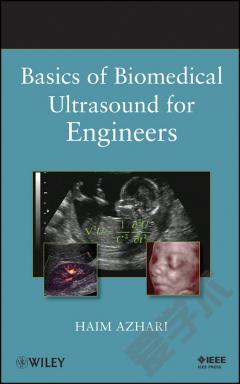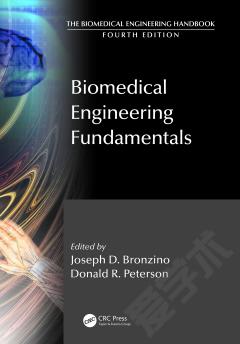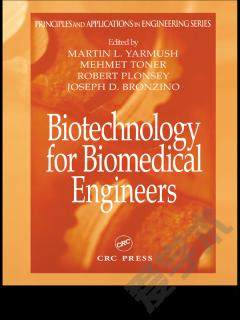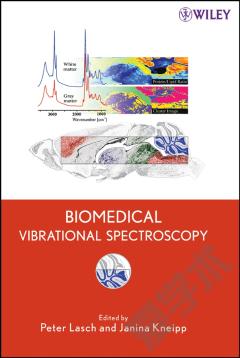Basics of Biomedical Ultrasound for Engineers
Preface. Acknowledgments. Introduction. Prelude and Basic Definitions. The Advantages of Using Ultrasound in Medicine. A General Statement on Safety. Some Common Applications of Ultrasound. What Is It that We Need to Know? References. 1 Waves A General Description. 1.1 General Definitions of Waves A QualitativeDescription. 1.2 General Properties of Waves A QualitativeDescription. 1.3 Mechanical One-Dimensional Waves. 1.4 The Wave Function. 1.5 The Wave Equation. 1.6 Harmonic Waves. 1.7 Group Waves. 1.8 Wave Velocity. 1.9 Standing Waves (a Mathematical Description). 1.10 Spherical Waves. 1.11 Cylindrical Waves. 1.12 The Wave Equation in a Nonhomogeneous Medium. References. 2 Waves In A One-Dimensional Medium. 2.1 The Propagation Speed of Transverse Waves in a String. 2.2 Vibration Frequencies for a Bounded String. 2.3 Wave Reflection (Echo) in a One-Dimensional Medium. 2.4 Special Cases. 2.5 Wave Energy in Strings. 2.6 Propagation of Longitudinal Waves in an Isotropic Rod orString. 2.7 A Clinical Application of Longitudinal Waves in aString. References. 3 Ultraspmoc Waves in Fluids. 3.1 Waves in Fluids. 3.2 Compressibility. 3.3. Longitudinal Waves in Fluids. 3.4 The Wave Energy. 3.5 Intensity. 3.6 Radiation Pressure. 3.7 A Perfect Reflector. References. 4 Propogation of Acoustic Waves in Solid Materials. 4.1 Introduction to the Mechanics of Solids. 4.2 The Elastic Strain. 4.3 Stress. 4.4 Hooke s Law and Elastic Coefficients. 4.5 The Wave Equation for an Elastic Solid Material. 4.6 Propagation of a Harmonic Planar Wave in a SolidMaterial. References. 5 Attenuation and Dispersion. 5.1 The Attenuation Phenomenon. 5.2 Explaining Attenuation with a Simple Model. 5.3 Attenuation Dependency on Frequency. 5.4 The Complex Wave Number. 5.5 Speed of Sound Dispersion. 5.6 The Nonlinear Parameter B/A. References. 6 Reflection and Transmission. 6.1 The Acoustic Impedance. 6.2 Snell s Law. 6.3 Reflection and Transmission from Boundaries Separating TwoFluids (or Solids with No Shear Waves). 6.4 Reflection from a Free Surface in Solids (ModeConversion). 6.5 Reflection and Transmission from a Liquid SolidBoundary. References. 7 ACOUSTIC LENSES AND MIRRORS. 7.1 Optics. 7.2 Optics and Acoustics. 7.3 An Ellipsoidal Lens. 7.4 Spherical Lenses. 7.5 Zone Lenses. 7.6 Acoustic Mirrors (Focusing Reflectors). References. 8 Transducers and Acoustic Fields. 8.1 Piezoelectric Transducers. 8.2 The Acoustic Field. 8.3 The Field of a Point Source. 8.4 The Field of a Disc Source. 8.5 The Field of Various Transducers. 8.6 Phased-Array Transducers. 8.7 Annular Phased Arrays. References. 9 Ultrasonic Imaging Using the Pulse-Echo Technique. 9.1 Basic Definitions in Imaging. 9.2 The A-Line . 9.3 Scatter Model for Soft Tissues. 9.4 Time Gain Compensation. 9.5 Basic Pulse-Echo Imaging (B-Scan). 9.6 Advanced Methods for Pulse-Echo Imaging. References. 10 Special Imaging Techniques. 10.1 Acoustic Impedance Imaging Impediography. 10.2 Elastography. 10.3 Tissue Speckle Tracking. 10.4 Through-Transmission Imaging. 10.5 Vibro-acoustic Imaging. 10.6 Time Reversal. 10.7 Ultrasonic Computed Tomography. 10.8 Contrast Materials. 10.9 Coded Excitations. References. 11 Doppler Imaging Techniques. 11.1 The Doppler Effect. 11.2 Velocity Estimation. 11.3 Frequency Shift Estimation. 11.4 Duplex Imaging (Combined B-Scan and Color FlowMapping). References. 12 Safety and Therapuetic Applications. 12.1 Effects Induced by Ultrasound and Safety. 12.2 Ultrasonic Physiotherapy. 12.3 Lithotripsy. 12.4 Hyperthermia HIFU and Ablation. 12.5 Drug Delivery. 12.6 Gene Therapy. 12.7 Cosmetic Applications. References. Appenidx A: Typical Acoustic Properties of Tissues. Appendix B: Exemplary Problems. Appendix C: Answers to Exemplary Problems. Index.
{{comment.content}}








 京公网安备 11010802027623号
京公网安备 11010802027623号